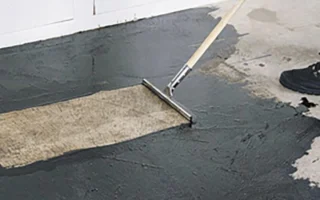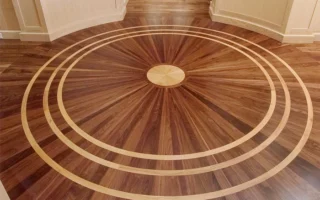Keeping your laminate floor stable and secure is essential to maintain its appearance and longevity. By understanding the common reasons for laminate floor movement, such as poor installation techniques, water damage, humidity fluctuations, temperature changes, and structural issues in the subfloor, you can take proactive steps to address these issues.
If you notice your laminate floor moving or shifting, it’s crucial to investigate the root cause promptly. Whether it requires simple adjustments or more extensive repairs, addressing the issue early can prevent further damage and costly fixes.
Prevention is vital when it comes to maintaining a stable laminate floor. By following proper installation guidelines, controlling moisture levels in your home, monitoring humidity and temperature changes, and ensuring a structurally sound subfloor, you can help prevent future floor movement issues.
Understanding Laminate Flooring
Laminate flooring is famous for many homeowners due to its affordability and aesthetic appeal. It consists of multiple layers, including a wear, design, core, and backing layer. These layers are fused through lamination to create durable planks that mimic a hardwood or tile look.
One key feature of laminate flooring is its floating installation method. This means the planks are not glued or nailed down but instead interlock with one another. This allows for easy installation and replacement if needed.
Despite its durability, laminate flooring can still experience movement over time. Understanding the factors contributing to this movement is crucial in maintaining the integrity of your floors.
Common Reasons for Laminate Floor Movement

Laminate flooring is a popular choice for many homeowners due to its durability and affordability. One common issue that some may face is the movement of their laminate floors. There are several reasons why this might happen.
Poor installation techniques can lead to gaps between the planks, causing the floor to shift and move when walked on. Water damage and moisture issues can cause the floorboards to swell or warp, creating instability in the flooring.
Humidity and temperature changes can also impact laminate floors, causing them to expand or contract unevenly. This fluctuation in size can result in gaps forming between the planks over time.
Structural issues in the subfloor can contribute to laminate floor movement as well. Uneven surfaces or lack of proper support underneath the flooring can lead to shifting and creaking.
Poor Installation Techniques
Regarding laminate flooring, the installation process plays a crucial role in its stability and longevity. Poor installation techniques can lead to various issues, including the dreaded floor movement.
One common mistake is not acclimating the planks properly before installing them. This oversight can cause the boards to expand or contract after installation, leading to gaps or buckling.
Another issue is leaving more expansion gaps around the room’s edges. Without these spaces, the flooring has no room to adjust to changes in temperature and humidity, resulting in warping or shifting.
Using inadequate underlayment or skipping essential steps like proper subfloor preparation can also contribute to a moving laminate floor. These shortcuts compromise the integrity of the installation and pave the way for problems down the line.
Water Damage and Moisture Issues

Water damage and moisture issues can wreak havoc on your laminate flooring, causing it to shift and buckle. If water seeps into the seams of the planks, it can weaken the core material, leading to warping and movement. This commonly occurs in areas prone to spills, like kitchens or bathrooms.
Moisture from humidity levels that are too high can also be a culprit. Excess moisture can penetrate the planks, causing them to expand and contract, resulting in movement over time. Maintaining proper indoor humidity levels is essential to prevent this type of damage.
To mitigate water damage and moisture issues, ensure any spills are promptly cleaned up, use mats at entryways to trap excess moisture, and consider using a dehumidifier in humid environments. By taking proactive measures, you can help preserve the integrity of your laminate flooring for years to come.
Humidity and Temperature Changes
When it comes to laminate flooring, humidity, and temperature changes can play a significant role in causing the floor to move.
Laminate floors are sensitive to fluctuations in humidity levels, which can cause the planks to expand or contract. This movement can lead to gaps between the planks or even buckling if not addressed promptly.
During hot and humid weather, laminate flooring tends to absorb moisture from the air, causing it to swell. Conversely, the planks may shrink during colder and drier conditions due to a lack of moisture.
To prevent your laminate floor from moving due to humidity and temperature changes, it is essential to maintain a consistent indoor climate by using a dehumidifier in humid conditions and a humidifier in dry environments.
Structural Issues in the Subfloor
Structural issues in the subfloor can be a primary culprit in laminate floor movement. A weak or uneven subfloor can cause the laminate planks to shift and buckle over time. This often occurs due to inadequate support or improper preparation before installation.
If the subfloor is not leveled correctly, it can lead to gaps between the planks or even create a wavy appearance across the floor. Moisture seeping through cracks in the subfloor can weaken its integrity and impact the stability of the laminate flooring above.
To address structural issues in the subfloor, reinforcing or replacing compromised sections may be necessary. Properly preparing and leveling the subfloor before installing new laminate flooring is crucial for long-term stability and preventing future movement issues.
How to Fix a Moving Laminate Floor

If you find your laminate floor moving, don’t worry – there are ways to fix it. One standard solution is reinstalling the affected planks using a tapping block and pull bar. By carefully disassembling and then reinstalling the planks, you can eliminate gaps causing movement.
Another method involves using adhesive to secure the edges of the laminate flooring to prevent shifting. Make sure to use a high-quality flooring adhesive recommended by the manufacturer for best results.
Adding additional support under the subfloor might be necessary for more stubborn cases of floor movement. This could involve reinforcing joists or adding plywood for extra stability.
Regularly inspecting your laminate floor for any signs of movement and addressing them promptly can help prevent further issues. Remember that proper installation techniques ensure a stable and long-lasting laminate floor.
Prevention Tips for Future Floor Movement
Prevention is vital when it comes to keeping your laminate floor in place. To avoid future movement, start by ensuring a proper installation process. Hire professionals or carefully follow manufacturer guidelines for a secure fit.
Maintain a consistent indoor environment by controlling humidity levels and temperature fluctuations. Use dehumidifiers in damp areas and keep the room well-ventilated to prevent moisture build-up.
Regularly inspect your subfloor for any structural issues that may affect the stability of your laminate flooring. Address any problems promptly to prevent further movement.
Choose high-quality underlayment materials to provide additional support and cushioning for your laminate floor. Invest in products specifically designed to reduce shifting and noise.
Be mindful of the heavy furniture placed on your laminate floor. Use protective pads underneath furniture legs to distribute weight evenly and minimize pressure points that could cause the floor to move over time.




